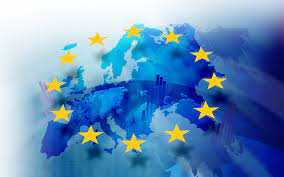EU countries want to ease conditions for a proposed gas price cap to be triggered following criticism that the European Commission’s model was too strict, according to a leaked draft, seen by EURACTIV.
The new set of amendments, circulated by Czechia, which currently holds the EU’s six-month rotating presidency, show a significant lowering of the thresholds needed to be met to trigger a price cap on Europe’s main gas trading hub.
The revised proposal significantly lowers the first trigger: the price of gas on the EU’s main gas trading hub, the Dutch Title Transfer Facility (TTF). This level has dropped from €275 per megawatt hour in the European Commission’s proposal, to €264 in a previous leak and now to €220 in the latest draft.
The second trigger – the number of days the price exceeds the level of the cap – has also been reduced from two weeks to five days.
The amendments also lower the threshold of the third trigger: the difference between the global liquified natural gas (LNG) price and the price of gas.
Even if the other two triggers are met, the price cap would only come into force if the difference between the Dutch TTF and the global LNG price is more than €35, down from €58 in the European Commission’s draft.
The original proposal was widely criticised by EU capitals when it was tabled in November, with the Spanish environment minister Teresa Ribera calling it “absolutely inapplicable, ineffective, off-target”.
Meanwhile, Czech minister Jozef Sikela told journalists: “First we had a problem because the Commission was not able to put a proposal on the table. Now we have the opposite problem because it did.”
There are also moves by the Czech Presidency to introduce more dynamic elements to the Commission proposal. The latest revision talks about a “dynamic” ceiling rather than a fixed one.
EU countries still divided
Discussions on the gas price cap remain difficult, with EU countries entrenched in their positions.
The camp most adamant about the implementation of a cap appears to be growing from the “fanatic four” comprising Belgium, Italy, Poland and Greece. It now includes Slovenia with Malta and Lithuania also showing support, EURACTIV understands.
Last week, Belgium, Italy, Poland, Greece and Slovenia tabled a non-paper with a proposal for a different gas price cap for the Dutch TTF that would be permanently in place from 1 January 2023 without any additional triggers.
The cap level would either be fixed at €160/MWh or defined every month based on other international gas benchmarks. Other EU gas exchanges would be linked to it and be allowed a 5% variation to maintain a price signal for intra-EU flows.
The mechanism would be governed by a “traffic light” system whereby it would operate in normal conditions, have “discretion” once certain thresholds related to gas deliveres and security of supply are reached and would be automatically removed were these to worsen.
The cap would also cover all future trading rather than just month-ahead products as the European Commission proposal does.
Month-ahead products account for “some 22%” of trade on the Dutch TTF, according to an EU official. The EU executive left out spot and day-ahead trading to avoid jeopardising liquidity on short-term markets and security of supply. Over-the-counter trading was also left out as it cannot be easily monitored and could act as a safety valve.
In the proposal by the five countries, the rationale for including all future trading is to limit arbitrage, ensure the same treatment of differently indexed contracts and allow intra-day transactions above the cap as a safety valve.
However, not all EU member states are confident about implementing such a cap. Countries including the Netherlands, Austria and Germany are more sceptical.
The Netherlands has been particularly vocal, with Dutch minister Rob Jetten calling the European Commission’s proposal flawed and warning there is “a lot of risk for damaging the energy security of supply and also for the stability of the financial markets”.
According to a paper circulated by the Hague on Friday (2 December), “The current Commission proposal has many drawbacks: a cap applying to all buyers across the board will upset financial markets (exchanges/derivatives markets), brings serious risk for the security of supply and could be circumvented through the use of OTC or foreign platforms.”
The document proposes another measure to limit high gas prices. It suggests a low, dynamic price cap for filling gas storage to prevent what it calls “price insensitive” European buyers, like those supported by governments or legally obliged to buy gas, from pushing up the price.
Buying gas for storage normally takes place in a relatively short time frame and is “of such magnitude” that it can influence or even set the price, particularly when some have “almost unlimited” resources to buy supplies, the paper explains.
It argues that one of the main causes for the gas price peaking in August was that these “price insensitive” buyers caused the price to spiral.
Therefore, it proposes a cap that can be applied year-round to the buying and future transactions of price insensitive players. It would be broader in scope and lower than the European Commission’s proposal.
It would also have a dynamic element and be reviewed every month to ensure supply reaches all of Europe and that there is sufficient filling to meet the EU’s gas storage goals.
Alongside this, it would not hamper financial markets or market liquidity, would be applicable to all market segments and would bring prices down, according to the paper.
EU country representatives will discuss the new revision of the European Commission’s price cap proposal at their meeting on Wednesday and again on Saturday ahead of their emergency meeting on Tuesday (13 December), where the Czech presidency wants to reach a final agreement.

 Iran Energy News Oil, Gas, Petrochemical and Energy Field Specialized Channel
Iran Energy News Oil, Gas, Petrochemical and Energy Field Specialized Channel



